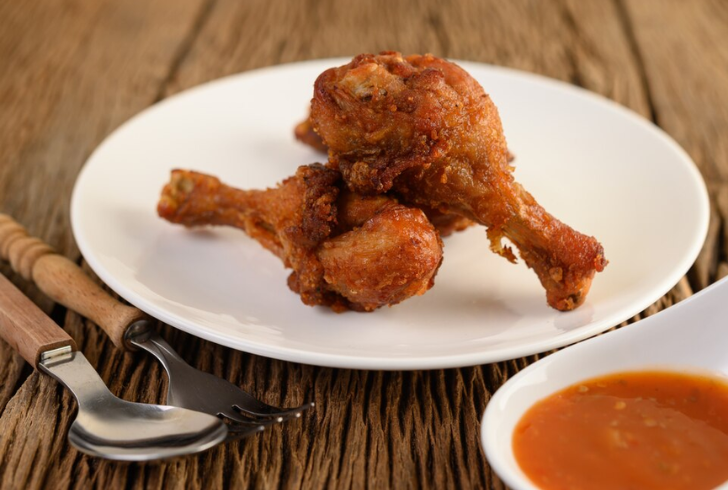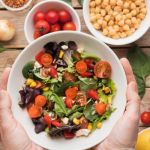Taking Ozempic, a medication that’s become a game-changer in the weight loss arena, can be a powerful tool for shedding pounds and keeping them off. But like any effective medication, it can come with a few side effects, especially when it comes to food choices. If you’re experiencing uncomfortable digestive issues like nausea, bloating, or diarrhea after starting Ozempic, you’re not alone. The good news? By making some smart tweaks to your diet, you can minimize these side effects and keep your weight loss journey smooth sailing.
So, ditch the generic advice and dive into this comprehensive guide to Ozempic foods you should avoid. We’ll explore why certain foods can trigger discomfort, unveil the surprising culprits you might not expect, and offer practical tips to navigate your menu choices with confidence.
Why Certain Foods Don’t Play Nice With Ozempic

Instagram | 6abcactionnews | Ozempic regulates blood sugar, slows stomach emptying, and curbs appetite.
Ozempic works its magic by regulating blood sugar, slowing down how quickly your stomach empties, and curbing your appetite. While this translates to feeling fuller for longer and effortless calorie restriction, it can also mean food hangs around in your digestive system for a bit longer. This extended stay can sometimes lead to unpleasant side effects.
Here’s the science breakdown:
-
Fatty and Greasy Fare: Think fried chicken, greasy burgers – these are notorious for slowing down digestion even without medication. When combined with the effects of Ozempics, they can create a recipe for discomfort.
-
High-Fiber Mischief: While fiber is generally a health superstar, some high-fiber vegetables like broccoli, cauliflower, and beans can cause bloating and gas, especially if your gut isn’t accustomed to them.
-
The Sugar Blues: Sugary drinks and processed foods can cause blood sugar spikes, which Ozempic works against. This imbalance can lead to nausea and digestive upset.
Ozempic Foods You Should Avoid

Freepik | jcomp | Avoid fried chicken, red meat, and sugary beverages while on Ozempic.
Now that you understand the why, let’s tackle the which. Here’s a list of foods to avoid on Ozempic that might be causing your digestive distress:
- Fried Foods: French fries, onion rings, fried chicken – you get the picture.
- Fatty Meats: Red meat like hamburgers and steaks can be particularly troublesome.
- Sugary Drinks and Treats: Soda, candy, pastries – these sugary indulgences are best left on the shelf.
- Alcohol: Beer, wine, and liquor can irritate your stomach and worsen side effects.
- High-Fiber Vegetables (in large quantities): While cruciferous vegetables like broccoli and cauliflower are great for overall health, introduce them gradually if you’re new to a high-fiber diet.
- Spicy Foods: If you have a sensitive stomach, spicy dishes might be best enjoyed after you’ve adjusted to Ozempic.
Tailoring Your Ozempic Food Strategy
Remember, everyone reacts differently. While this list provides a good starting point, the key is to identify your own personal Ozempic food triggers. Here are some tips to help you navigate your diet:
-
Listen to Your Body: Pay attention to how you feel after eating certain foods. If something consistently causes discomfort, take note and adjust your choices.
-
Start Slow: If you’re not used to a high-fiber diet, gradually increase your intake to avoid a sudden spike in gas and bloating.
-
Embrace Smaller, More Frequent Meals: This can help with digestion and prevent overeating, which can worsen side effects.
-
Hydration Is Key: Drinking plenty of water throughout the day can help move food through your digestive system more efficiently.
-
Don’t Fear Fat: Healthy fats from sources like avocados, nuts, and olive oil can be satiating and keep you feeling full without causing digestive issues.
Building a Support System

Freepik | pressfoto | See a doctor for a personalized plan, including advice on Ozempic foods you should avoid.
Consulting with a doctor or registered dietitian is crucial when starting Ozempic. They can help you create a personalized plan that addresses your specific needs and preferences, including guidance on Ozempic foods you should avoid. They can also offer expert advice on managing side effects and maximizing your weight loss success.
Embrace the Journey
Foregoing Ozempic foods you should avoid when it comes to your diet doesn’t have to mean sacrificing flavor or variety. Explore a world of delicious and nutritious options that won’t derail your progress. Think lean protein sources like grilled chicken or fish, colorful low-glycemic vegetables, and whole grains like quinoa or brown rice. Get creative with spices and herbs to add flavor without the digestive woes.
By understanding the impact of certain foods and making informed choices, you can minimize side effects and unlock the full potential of Ozempic. A healthy and sustainable weight loss journey is all about progress, not perfection. Embrace the exploration of new flavors and textures, celebrate your non-scale victories, and enjoy the journey of becoming a healthier, happier you.







